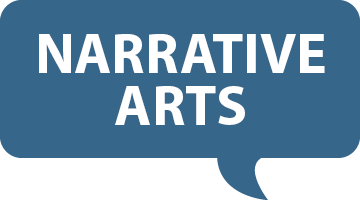Blog
On short- and long-term story strategy
 How do we tell good stories? How do we encourage constituents to share their stories to build community power? How do we get new audiences to hear the stories our movement is creating?
How do we tell good stories? How do we encourage constituents to share their stories to build community power? How do we get new audiences to hear the stories our movement is creating?
These are a few of the questions that funders have been posing over the last six months as we’ve been presenting the Narrative Arts publication, “Storytelling and Social Change: A Strategy Guide for Grantmakers.”
Over the next 2 months on the blog, we’ll be presenting 2-3 answers to each of the toughest questions we’ve received. Responses will come from activists, filmmakers, writers, funders and others. Read on, and keep your eyes peeled to the blog for more answers to this and other questions!
THE QUESTION
Funders deal with many big and entrenched social problems such as poverty, disease, or mass incarceration. One New York City-based funder speaks for others when he asks about how to communicate about these big issues in a way that balances the short-term work with the long-term goals. “How can we best frame social-change efforts so that they feel big but manageable, ambitious yet encouraging? How do we do communications so as to celebrate small, ‘tactical’ victories along the way, while connecting each of those efforts to a larger social-change goal that may take years to achieve?”
THE RESPONSE
Yvette Alberdingk-Thijm, the Executive Director of WITNESS, which uses video to open the eyes of the world to human rights violations.
Social-justice storytellers need training, content curation and platforms to achieve both their short-term and long-term goals. I’ll use WITNESS as an example.
For two decades, WITNESS has used the power of video to elevate the voices of marginalized people who have experienced human-rights abuses around the world.
Today, video and communications technologies are far more accessible, and the human-rights movement could benefit enormously from millions of witnesses sharing their stories. To fulfill that potential, three things need to happen.
First, human-rights advocates need training, resources and support in how to use video to tell their stories. And they need the strategies and the support networks to ensure those stories are seen by those with the power to effect change. To share just one success: the indigenous Endorois community of Kenya fought a land dispute in the African Court for four decades until WITNESS trained the tribe in video advocacy and helped propel the case to victory.
Second, individual videos need to be put in the context of a larger story about a given human-rights crisis. That’s why, for example, WITNESS and our partners curated 114 videos about people being forcibly evicted from their homes in Rio de Janeiro to make way for the 2014 World Cup and 2016 Olympics. On their own, these videos might seem like isolated incidents; added together, they create a devastating portrait of systematic human-rights violations.
Third, human-rights video needs dedicated platforms so that these important stories can stand out more amidst the enormous volume of online video; that’s why we created the YouTube Human Rights Channel to verify, amplify and contextualize human-rights content in a safe space. Since online communications are insecure and can expose human-rights activists to further persecution, WITNESS is also working to make sure that technology companies adopt policies and practices to make the mainstream platforms we all use more human-rights friendly.
The human-rights movement can’t recreate a new video-advocacy infrastructure for every new human rights crisis around the globe. Training, content curation and platforms—these all serve the short-term goals of a particular campaign, while also building a stronger human-rights movement for years to come.
The human-rights movement has an extraordinary opportunity to engage a new generation of people to tell human-rights stories, with the potential to transform the way human-rights advocacy is done – but that new generation needs tools, resources and training to ensure that this can be done safely, ethically, and effectively.
